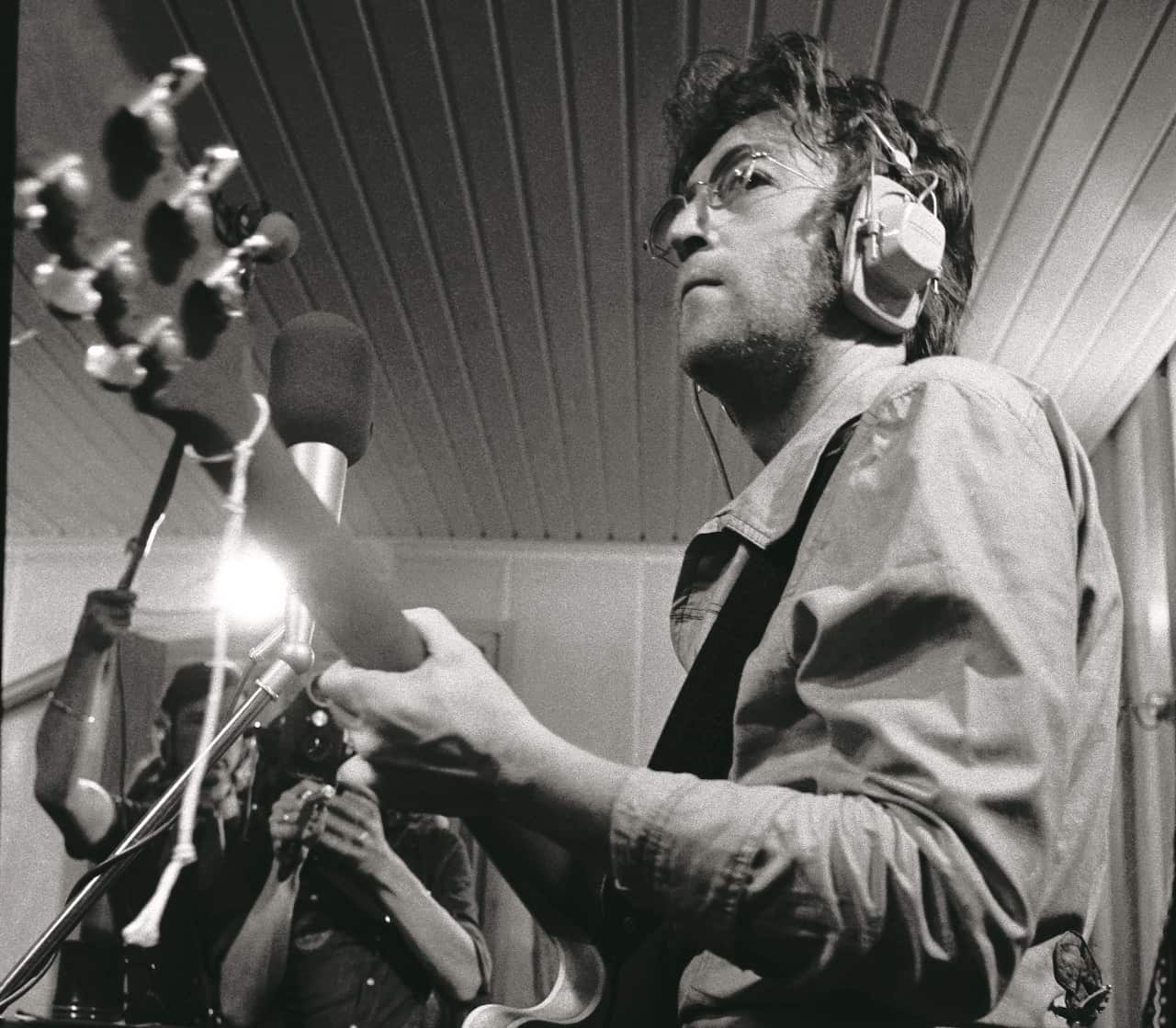In the lore of The Beatles, there is no central figure that is despised as much as Yoko Ono. She has been widely blamed for forcing the band’s breakup, for turning John into a peace-loving beatnik, a heroin addict and a creator of impenetrable art – and for interfering in the making of the band’s final three records.
The truth is that Yoko was good for The Beatles. She lifted John out of a deep depression, inspired some of his finest work, and encouraged him to experiment and push boundaries in a way that has become central to The Beatles’ legacy.
Sgt. Pepper’s Lonely Hearts Club Band is considered the band’s magnum opus, a kaleidoscopic masterstroke that ushered in the Summer of Love. But during that period Lennon was in an emotional funk, trapped in a floundering marriage, living isolated in the country and taking copious amounts of LSD. Pepper marks the point at which Paul became the fulcrum of the band, driving the album’s overall conceit. John had checked out mentally.
“I was … in a real big depression in Pepper, and I know Paul wasn’t at that time,” .“He was feeling full of confidence. I was going through murder.
“Paul said, ‘Come see the show’. I said, ‘I read the news today, oh boy.’” With Yoko, Lennon became more interested in the artistic movements that McCartney had embraced during his time as a single man living in London.
With Yoko, Lennon became more interested in the artistic movements that McCartney had embraced during his time as a single man living in London.

John Lennon recording his Imagine album in 1971. Source: SBS
Although Paul was the first Beatle to dabble in tape loops and backwards sounds, John pushed this to the logical extreme with , eight minutes twenty-two seconds of pure sonic madness, inspired by Yoko’s avant garde experimentations. John, Yoko and George constructed the loops and gathered the numerous tape samples, and John and Yoko mixed the track alone. Paul, who was overseas at the time, wasn’t impressed by the results – but its existence in The Beatles’ catalogue adds a striking dimension to their body of work that wouldn’t have existed otherwise.
This mood of experimentation extended to the band’s twin record labels Apple – for more traditional artists like James Taylor – and Zapple, for avant garde pieces. The now legendary Apple logo was based on , a Granny Smith sitting on a plexiglass box.
Whereas Lennon was a self-taught musician, Ono was classically trained, giving her skills that she used to help Lennon write The Beatles’ sterling ‘Because’. John asked her to invert the melody to Beethoven’s 'Moonlight Sonata', which formed the basis of this track.
John’s unfettered vocals on ‘The Continuing Story of Bungalow Bill’ cement the communal singalong vibe of the track, and points to later chants, such as ‘Give Peace A Chance’ – a song he wrote with Yoko, although for legal reasons McCartney received co-writing credit – and ‘Instant Karma’.
Much of Lennon’s most beloved solo work also came as a direct result of his collaborations with Ono. ‘Imagine’ was inspired by poems in her 1964 collection ‘Grapefruit’, most notably ‘Cloud Peace’ which contains the line “Imagine the clouds dripping”. Lennon credited her with a lot of the lyrics and concept, and later admitted she should have received a co-writing credit – .
Blaming Yoko for the band’s breakup takes away the band’s agency. McCartney often quipped that in future years scholars would talk of how The Beatles broke up because Yoko sat on an amp in the studio. While the other members were open in their , her constant presence in the studio was emblematic of the fissures already developing within the group.
“I don’t think you could have broken up four very strong people like them,” , “even if you tried. So there must have been something that happened within them – not an outside force at all.”
That inside force was ego, and the simple passage of time.
John and Paul had effectively stopped co-writing songs by the time Yoko came into the fold. George Harrison was sick of being sidelined. With only a few of his songs getting a look in on each Beatles record, he was building a backlog of material, as evidenced by the release of his triple album All Things Must Pass a mere seven months after the dissolution of The Beatles. And Ringo was the first to quit, albeit temporarily, walking out during heated White Album sessions. The Beatles were growing past the age where they wanted to acquiesce to group decision making.
The Beatles were growing past the age where they wanted to acquiesce to group decision making.

George Harrison played on a few tracks of Imagine, after the breakup of The Beatles. Source: SBS
“When I met Yoko is when you meet your first woman and you leave the guys at the bar and you don’t go play football anymore and you don’t go play snooker and billiards,” .
“As soon as I met her, that was the end of the boys, but it so happened that the boys were well known and weren’t just the local guys at the bar.”
Lennon’s first artistic partner later came to realise that Ono was a positive influence.
“She always pushed him, which he liked,” . “Nobody had ever pushed him like that.”
John and Yoko: Above Us Only Sky airs on Sunday, 17 March at 8:35pm on SBS. After broadcast, it will be available to stream at SBS On Demand:








